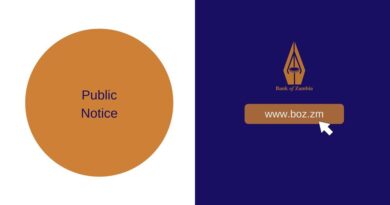The Black Friday Remix: What 2025 Will Look Like After a Rule-Changing 2024
In 2024, Black Friday stopped being an imported promo day in South Africa and started dictating terms. It was a supercharged, concentrated surge of shopping that reset expectations and rewired retail playbooks. According to the Ecentric Payment Systems’ Black Friday Index 2024, the four-day Black Friday to Cyber Monday window punched well above its weight with online transactions jumping from 7.9% to 10.3% – a 30.4% increase – while in-store revenue more than doubled to 11.1%.
The shape of the event has changed from a vague outline of some stores offering discounts to a firm discount buster with extraordinary sales volumes. Globally, Black Friday has become an almost month-long experience, something that has already started in South Africa, with Black November bringing promotions throughout. But these tend to be the start of the tail that leads to the weekend itself, where, as the report found, shopping has become concentrated over four days, whereas in the past, shopping would continue well into December. For the first time, the peak moved from early December, and the strongest returns were felt over the weekend.
This was a global trend as well. Shopify merchants alone processed more than $11.5 billion over the Black Friday weekend at a 24% year-on-year increase, and according to Adobe Analytics, Black Friday sales were up to $10.8 billion from $9.8 billion in 2023[1][2]. Shoppers are saving their big-ticket purchases for that late November window and holding back on discretionary spending until the deals drop.
Yet the numbers only tell a part of the story. What made 2024 distinctive wasn’t just the scale and timing of spending, but the ways in which consumers chose to shop. Mobile devices have become the most popular storefront with millions of consumers transacting on their phones while on the move. At the same time, physical stores showed they could still pull in the crowds if they offered something beyond discounts. Festive atmospheres, interactive demonstrations and exclusive in-store promotions gave shoppers reasons to queue.
This resurgence of in-store retail in South Africa is particularly interesting. Ecentric’s Index showed that in-store revenue over the Black Friday weekend more than doubled its share of the holiday total. It suggests that while online convenience is still a winner, South Africans are enjoying the energy of a shopping trip when the experience feels worthwhile.
The rules of engagement are slowly changing. Mobile has to be rapid and easy with payment systems that can handle the extraordinary loads. Customers don’t want to lose deals because a payment system fails or websites can’t handle the load. This does leave a bad taste, and customers are vocal about disappointing experiences or the perception of false advertising. In-store experiences have to be equally smooth and satisfying. Sure, there will be queues, but let these be accompanied by working systems and easy access to stock and unexpected experiences.
Black Friday in 2025 is going to be as much about consumer delight as it is going to be about deals and discounts.
Customers also don’t see Black Friday as a novelty anymore. It has to work hard for its money. Flexible payment options are expected to become more popular, so price-sensitive consumers can benefit from the deals but stay within their budgets. Personalisation, powered by AI, is also going to get sharper and more effective with tailored promotions sent to devices in real time.
This year, intelligent tech, smart payments, faster checkouts and bigger deals are going to lead the way, but they will be supported by immersive experiences, deeper personalisation, and more excitement as retailers build on last year to create something completely transformative.



